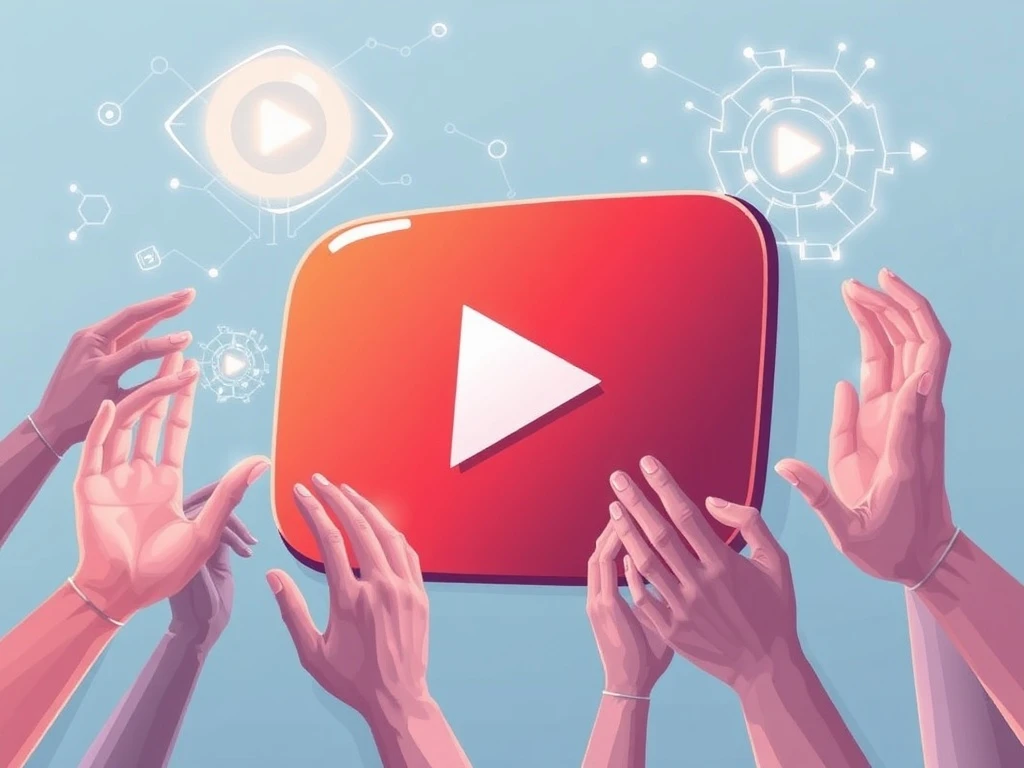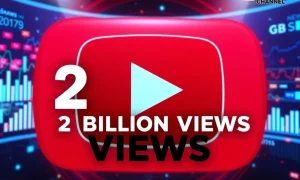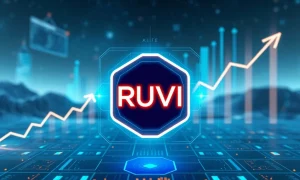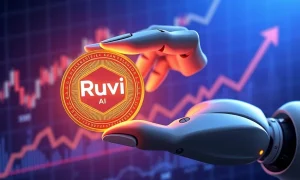The digital content landscape constantly evolves, presenting both innovation and challenges. Major platforms, serving as central hubs for information and entertainment, continually adapt to these shifts. One of the most significant recent developments involves the burgeoning capabilities of artificial intelligence. YouTube, a global leader in video sharing, recently unveiled a pivotal change to its content monetization policies. This new YouTube AI content policy aims to protect authentic human creativity and ensure the platform’s long-term viability. This strategic move signals a clear commitment to quality, trust, and the invaluable role of human creators in the digital ecosystem.
Understanding YouTube’s Strategic AI Content Policy
YouTube is rolling out updated monetization rules, a critical development for content creators worldwide. These changes directly impact how creators earn revenue. Specifically, they restrict opportunities for those relying solely on AI-generated material. This update, set to take effect imminently, emphasizes the necessity of “meaningful human input.” Such input encompasses a range of creative contributions, including thoughtful editing, insightful commentary, and original scripting. Molly McDonald, a prominent producer and founder of Blue Door Productions, has praised this initiative. McDonald, a seasoned YouTube content specialist, has collaborated with major brands and figures like Red Bull, KSI, and the BBC. She views the policy as a vital step in protecting human creativity and authentic storytelling on the platform.
McDonald articulated her support clearly. She stated, “YouTube’s new policy helps guard against the risk of AI use because it ensures human responsibility and oversight.” Furthermore, she explained its broader impact: “Reducing AI-generated content supports those who truly power the platform – real people crafting original work.” Importantly, the platform is not banning artificial intelligence outright. Instead, it draws a firm line. Content must feature substantive human involvement to be eligible for ad revenue. This distinction is crucial for maintaining the quality and integrity of YouTube’s vast content library. Therefore, creators must integrate their unique human touch.
The Distinction: AI as a Tool, Not a Crutch for Creators
Molly McDonald’s extensive experience across high-profile branded and influencer content aligns with YouTube’s new distinction. She views AI as a valuable, supplementary tool for the industry. “AI is a great tool for the industry,” McDonald commented. “It can aid scriptwriting, support editing workflows, and even generate supplementary content.” This perspective highlights AI’s powerful potential for enhancing creative processes. For example, AI can quickly generate initial script outlines, allowing human writers to focus on refining dialogue and narrative depth. Similarly, AI-powered editing tools can automate repetitive tasks, freeing editors to concentrate on artistic decisions and pacing.
However, McDonald cautions strongly against over-reliance. “But it’s important we don’t become dependent on it,” she warned. She believes mass automation, devoid of human oversight, would inevitably lead to low-quality output. Such output, she argues, damages the very fabric of the creative economy. She specifically mentioned the emerging concern of “AI slop.” This term describes low-effort, auto-generated content lacking originality or substance. A flood of this material, McDonald suggests, would erode viewer trust. It would also significantly reduce engagement. Ultimately, this harms both viewers seeking genuine content and professional creators striving for excellence. The new YouTube AI content policy directly addresses this potential decline in quality.
Protecting Authenticity: A Core Tenet of YouTube’s Future
These significant policy changes are part of a broader, strategic push by YouTube. The platform aims to retain its position as the premier destination for authentic voices. This goal becomes increasingly challenging as generative AI tools become more accessible and widely adopted. McDonald consistently emphasizes the irreplaceable nature of the human experience in content creation. “The bottom line is, the human experience cannot be replicated,” she asserted. She argues that true connection with audiences stems from emotional depth, nuance, and genuine authenticity. These qualities, she firmly believes, only real people can create. “That’s what builds trust and cultural value,” McDonald explained.
She further added that YouTube’s commitment to protecting that authenticity is not merely a safeguard for the present content landscape. It represents a vital investment in its own future. “By protecting authenticity in its content, YouTube is actually future-proofing its own success,” she concluded. This strong stance underpins the entire YouTube AI content policy. It ensures that while technology advances, the core value proposition of human-centric content remains paramount. This approach fosters a healthier ecosystem for both creators and consumers.
Broader Industry Trends and the Pursuit of Advertiser Trust
YouTube’s decisive move reflects growing concerns across the digital media landscape. Reports indicate that AI-generated content is increasingly flooding major platforms. This trend threatens to undermine overall content quality and erode user trust. YouTube’s new monetization guidelines align with similar shifts observed on other prominent platforms. For instance, TikTok and Instagram have also seen evolving content strategies. Brands and advertisers are increasingly seeking genuine, human-made content. They recognize that authenticity fosters deeper engagement and builds stronger brand loyalty. This preference directly influences platform policies and monetization structures.
The debate continues around where to draw the line between AI-assisted and AI-dependent content. However, creators like McDonald emphasize a clear focus. The industry must prioritize elevating originality and compelling storytelling. Chasing automation at scale, without human oversight, is not the path to sustainable growth. Instead, fostering human creativity remains paramount. This reinforces the core message of the YouTube AI content policy. It aims to ensure a vibrant, trustworthy, and economically viable content ecosystem for years to come. Ultimately, this benefits everyone involved in the creator economy.
The Economic Impact and Creator Opportunities
The implications of the YouTube AI content policy extend significantly into the creator economy. By prioritizing human-generated content, YouTube safeguards the income streams of creators who invest time and effort into original work. This policy disincentivizes the mass production of low-quality, AI-only content, which could otherwise dilute ad inventory and drive down advertising rates. Advertisers, in turn, benefit from knowing their campaigns are running alongside content that genuinely engages human audiences, leading to better ROI.
For established and emerging creators, this policy presents new opportunities. It encourages innovation within human creativity, pushing creators to leverage AI as a tool for efficiency rather than a substitute for their unique voice. Creators who master the art of integrating AI to enhance their storytelling, editing, or production value, while maintaining strong human oversight, will likely thrive. This shift reinforces the value of unique perspectives, emotional resonance, and the authentic connection that only human creators can forge with their audience. It ensures that quality remains a key differentiator in a crowded market.
Future-Proofing Digital Storytelling
YouTube’s commitment to this new policy is a forward-looking strategy. It positions the platform to adapt to the rapid advancements in AI technology. By establishing clear guidelines now, YouTube sets a precedent for responsible AI integration in content creation. This proactive approach helps mitigate potential risks, such as the spread of misinformation or the proliferation of unengaging content, which could severely damage user experience and platform reputation. Furthermore, it reinforces YouTube’s brand as a trusted source for diverse, high-quality video content.
This policy also sends a strong message to developers of AI tools: focus on creating assistive technologies that augment human capabilities, rather than attempting to fully automate creativity. The long-term vision for YouTube, therefore, involves a symbiotic relationship between human ingenuity and technological assistance. This ensures that the platform remains a vibrant hub for authentic voices and innovative storytelling. Ultimately, the YouTube AI content policy is a testament to the enduring power of human creativity in the digital age.
Conclusion: YouTube’s proactive YouTube AI content policy represents a significant and necessary step. It prioritizes human creativity and authentic engagement above all else. This strategic decision safeguards the platform’s integrity and protects the livelihoods of genuine creators. By drawing a clear line regarding AI-generated content, YouTube reinforces its commitment to quality. This move ensures that meaningful human input remains at the heart of digital storytelling. The future of online content, particularly on platforms like YouTube, depends on such thoughtful governance and a steadfast belief in the irreplaceable value of human ingenuity.
Frequently Asked Questions About YouTube’s AI Content Policy
- Q: What is YouTube’s new AI content policy?
A: YouTube’s new policy restricts monetization opportunities for creators who rely solely on AI-generated content. It emphasizes the need for “meaningful human input” for videos to be eligible for ad revenue. - Q: Does this policy mean AI content is banned on YouTube?
A: No, AI content is not banned outright. The policy distinguishes between AI as a tool to assist human creativity and content generated entirely by AI without substantial human oversight or input. - Q: What does “meaningful human input” entail?
A: Meaningful human input includes creative editing, original scripting, insightful commentary, unique storytelling, and any other human contribution that adds significant value and originality to the content. - Q: How does this policy protect creators?
A: By prioritizing human-led content, the policy helps prevent the market from being flooded with low-quality, mass-produced “AI slop.” This protects the value of original, human-made content and ensures fair monetization for creators who invest in authentic storytelling. - Q: How will this policy affect advertisers?
A: Advertisers benefit from the policy as it ensures their ads appear alongside higher-quality, more engaging, and trustworthy content. This can lead to better campaign performance and stronger brand association with authentic material. - Q: What should creators do to comply with the new YouTube AI content policy?
A: Creators should focus on integrating their unique human perspective, creativity, and oversight into their content. While AI tools can be used for assistance, the core creative direction and execution should remain human-driven to ensure eligibility for monetization.
























